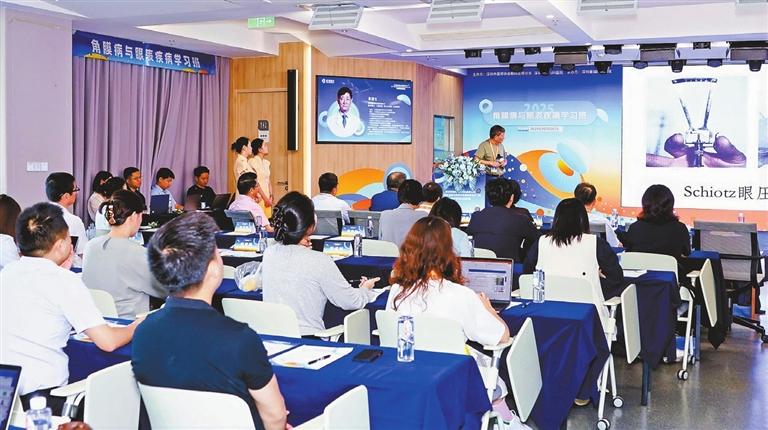
Debra Li debra_lidan@163.com SEVERAL hundred ophthalmologists from across China gathered over the weekend in Shenzhen’s Nanshan District for a seminar focused on the latest advances in the diagnosis and treatment of corneal and ocular surface diseases. Co‑organized by Shenzhen Bright Eye Hospital and the Shenzhen Medical Doctor Association, the meeting brought together leading specialists from top institutions including Sun Yat‑sen University’s Zhongshan Ophthalmic Center, Zhejiang’s Sir Run Run Shaw Hospital, Shenzhen Ophthalmic Hospital and Shenzhen People’s Hospital. Presentations and lectures covered a wide range of topics, from corneal transplantation and emerging gene therapies to the interactions between systemic diseases and corneal health. The cornea plays a central role in vision and overall ocular health; severe corneal injury or progressive corneal disease can ultimately lead to vision loss. Attendees reviewed the full spectrum of current treatment options — from pharmacological approaches and customized laser procedures to corneal transplants — and discussed ongoing research into stem‑cell and gene‑based therapies that may expand future treatment possibilities. Professor Huang Ting of the Zhongshan Ophthalmic Center described the seminar as a major step toward standardizing diagnostic and therapeutic procedures for cornea‑related diseases and disseminating advanced surgical techniques to frontline clinicians. “The seminar served not only as a classroom for young doctors but also as a platform for experts to exchange their latest research ideas. It helps bridge laboratory research and clinical practice and enables junior professionals to keep pace with cutting‑edge developments,” he said. Professor Zhao Jun of Shenzhen People’s Hospital delivered a detailed lecture on lattice corneal dystrophy (LCD), an inherited condition characterized by amyloid deposits in the cornea and progressive vision impairment. Drawing on extensive clinical experience, Zhao outlined the staging of LCD, approaches to genetic testing and analysis, and strategies for combining corneal transplantation with gene therapy to improve patient outcomes. Cui Lan, an optometry specialist from Shenzhen Bright Eye Hospital, emphasized the importance of recognizing Blepharokeratoconjunctivitis (BKC) in children. BKC is a chronic inflammatory disorder of the eyelid margin that can involve the conjunctiva and cornea; she warned that cases may be overlooked in children who wear ortho-K lenses, potentially leading to serious complications if not identified and treated promptly. Lu Haining, co‑author of a recent paper published in Science, presented research on the effect of “opal recoding” in enhancing oxygen metabolism in horses. While the study focuses on an animal model, Lu explained how the findings could provide valuable insights into gene therapy approaches for human eye diseases, suggesting potential translational pathways that merit further investigation. Other sessions examined complications associated with corneal transplantation, such as post‑operative glaucoma, and discussed surgical precautions when treating cataracts in patients with preexisting corneal disease. Experts also addressed risks and management strategies for patients who have previously undergone refractive laser surgery and later require corneal interventions. Throughout the seminar, speakers stressed the importance of multidisciplinary collaboration — integrating genetics, immunology, ophthalmic surgery and optometry — to advance diagnosis, refine treatment protocols and improve long‑term visual outcomes. | 
